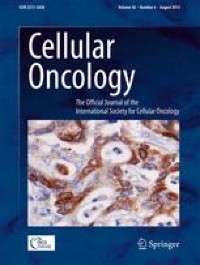Abstract
Purpose
Cholinergic signals can be important modulators of cellular signaling in cancer. We recently have shown that knockdown of nicotinic acetylcholine receptor subunit alpha 5, CHRNA5, diminishes the proliferative potential of breast cancer cells. However, modulation of CHRNA5 expression in the context of estrogen signaling and its prognostic implications in breast cancer remained unexplored.
Methods
Meta-analyses of large breast cancer microarray cohorts were used to evaluate the association of CHRNA5 expression with estrogen (E2) treatment, estrogen receptor (ER) status and patient prognosis. The results were validated through RT-qPCR analyses of multiple E2 treated cell lines, CHRNA5 depleted MCF7 cells and across a breast cancer patient cDNA panel. We also calculated a predicted secondary (PS) score representing direct/indirect induction of gene expression by E2 based on a public dataset (GSE8597). Co-expression analysis was performed using a weighted gene co-expression network analysis (WGCNA) pipeline. Multiple other publicly available datasets such as CCLE, COSMIC and TCGA were also analyzed.
Results
Herein we found that CHRNA5 expression was induced by E2 in a dose- and time-dependent manner in breast cancer cell lines. ER− breast tumors exhibited higher CHRNA5 expression levels than ER+ tumors. Independent meta-analysis for survival outcome revealed that higher CHRNA5 expression was associated with a worse prognosis in untreated breast cancer patients. Furthermore, CHRNA5 and its co-expressed gene network emerged as secondarily induced targets of E2 stimulation. These targets were largely downregulated by exposure to CHRNA5 siRNA in MCF7 cells while the response of primary ESR1 targets was dependent on the direction of the PS-score. Moreover, primary and secondary target genes were uncoupled and clustered distinctly based on multiple public datasets.
Conclusion
Our findings strongly associate increased expression of CHRNA5 and its co-expression network with secondary E2 signaling and a worse prognosis in breast cancer.



Δεν υπάρχουν σχόλια:
Δημοσίευση σχολίου
Σημείωση: Μόνο ένα μέλος αυτού του ιστολογίου μπορεί να αναρτήσει σχόλιο.